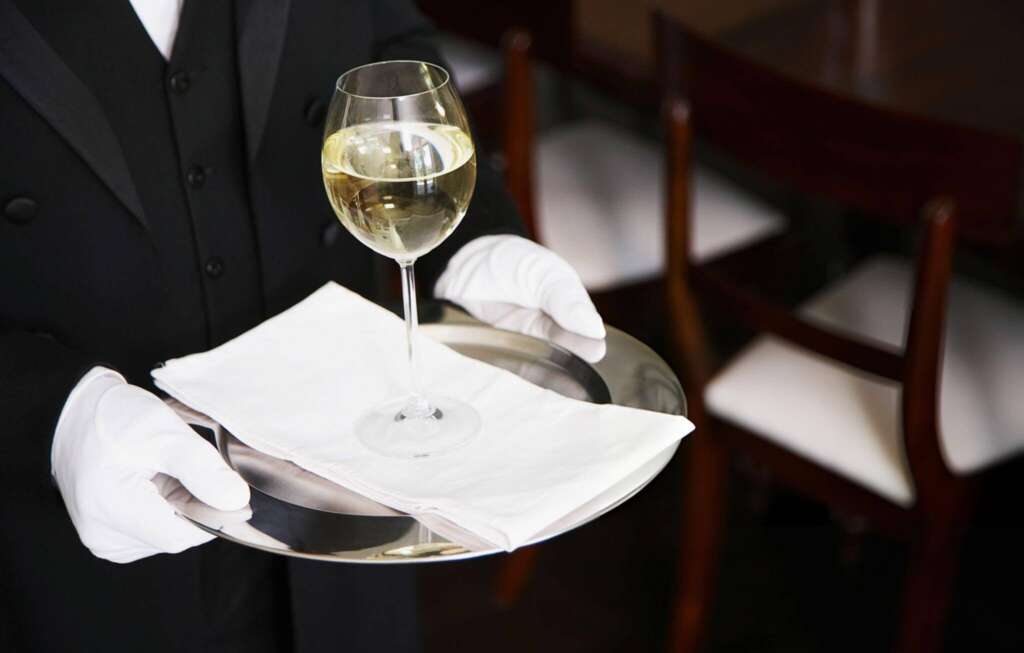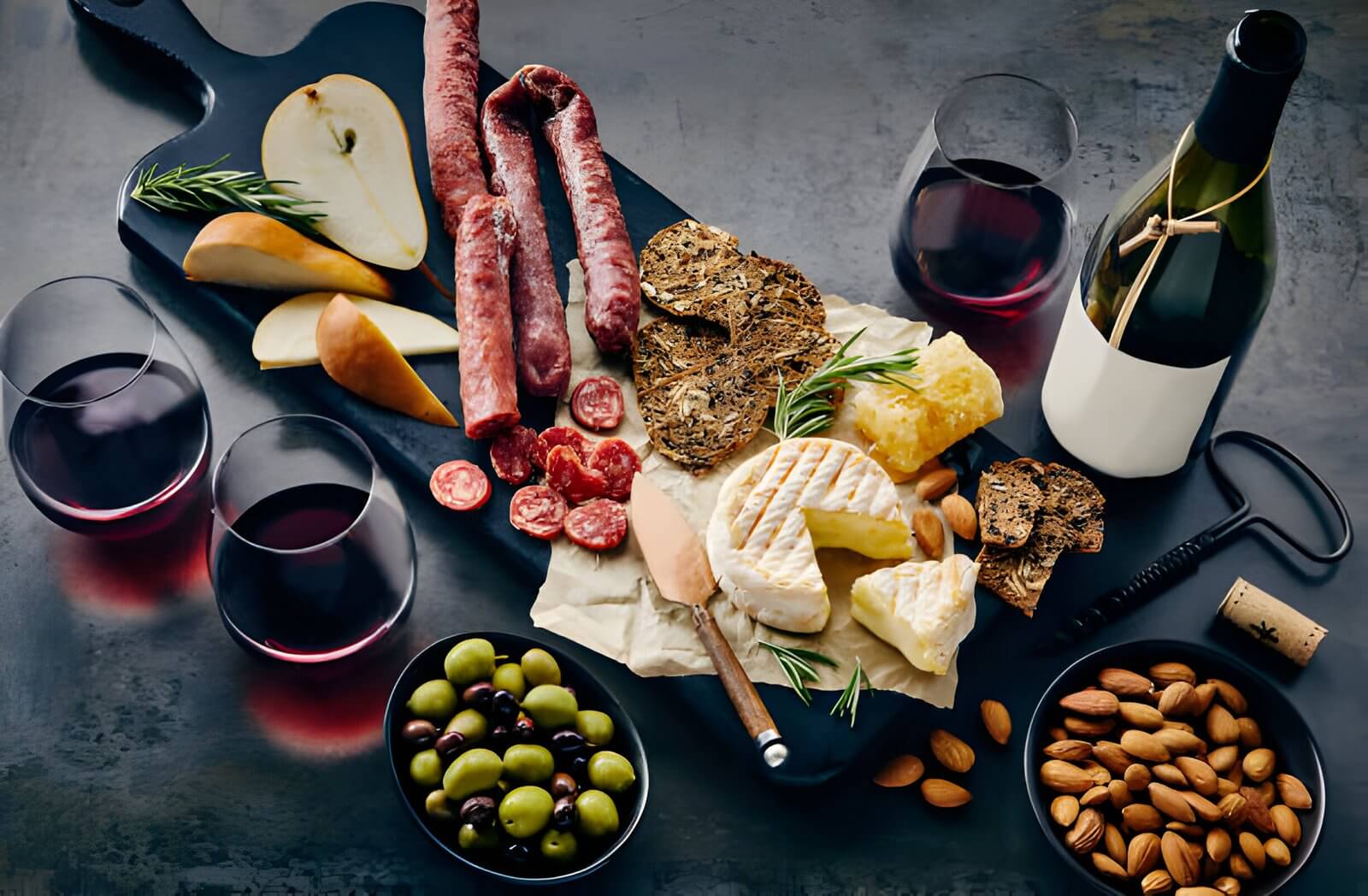Do you love wine but can’t have gluten? Many people wonder “Is wine gluten free?” The good news is, most wines are naturally gluten-free!
So what is Gluten?
Have you ever heard someone say they’re “going gluten-free”? Maybe you’ve even considered it yourself. But what exactly is gluten, this mysterious ingredient people seem to be avoiding?
The gremlin part? Well, gluten is kind of sticky and helps hold grains together, making them chewy and yummy. But for some people, this gluten gremlin can cause big problems!
If you have something called celiac disease, your body doesn’t like gluten at all. When you eat it, your body gets confused and thinks it’s under attack! This can make you feel yucky, with a grumbling tummy, a big poofy belly, and maybe even make you feel tired or grumpy.
Some other people might have a gluten sensitivity, which means their body doesn’t like gluten as much, but it doesn’t cause them to get quite as sick. Basically, gluten just doesn’t play well with their bodies.
So there you have it! Gluten, the tiny gremlin hiding in some grains. Now, let’s see how this little gremlin might (or might not!) find its way into your favorite drink: delicious wine!
From Grape to Glass: The Traditional Magic of Winemaking
Imagine this: plump, juicy grapes hanging on sunny vines, just waiting to turn into yummy wine! Winemakers are like grape whisperers, knowing exactly when the grapes are super happy and ready to be picked.
In the old-fashioned way, people might use their hands to carefully pick the ripest grapes, one by one. It’s like a treasure hunt for the juiciest grapes! Once they have a basket full, it’s time to give the grapes a gentle squish. This can be done in a special press that looks kind of like a giant grape juice box!
Now comes the fun part – the party for the grape juice! Winemakers add a special tiny friend called yeast. Yeast is like a microscopic baker who loves sugar. When the yeast gets mixed with the grape juice, it has a big sugar feast! As the yeast eats the sugar, it burps out bubbles (like when you drink soda too fast) and something special called alcohol. This is what turns the grape juice into yummy wine!
The whole party can take a few days or even a few weeks, depending on the kind of wine being made. After the yeast is done eating, the wine goes on a little adventure with more steps to make it even tastier, but that’s a story for another day.
The coolest thing about how wine is traditionally made is that it only uses two main ingredients: happy grapes and tiny yeast party animals! Now, let’s see if that sneaky gluten gremlin can find a way to crash this delicious party!
Sneaky Gluten Gremlins in Wine? Here’s the Scoop!
We learned that wine is usually made with just grapes and yeast, both naturally gluten-free. So, how could that gluten gremlin sneak into your delicious glass of wine? There are actually two sneaky ways this might happen:
The Fining Frenzy:
Imagine the winemaker looking at a vat of grape juice after the yeast party. It might look a little cloudy, with leftover bits and pieces from the grapes. To make the wine nice and clear, some winemakers use special helpers called “fining agents.” These act like tiny magnets, attracting the leftover bits and sinking them to the bottom, leaving behind a sparkling clear wine.
The problem? Some fining agents can be made from wheat or barley, which (you guessed it!) contain gluten! Luckily, most wineries nowadays use different fining agents that are gluten-free. Even if they do use a wheat-based agent, the amount of gluten left behind is usually very, very small.
The Barrel Bandit:
Some wines get to spend extra time aging in big oak barrels. Traditionally, these barrels might be sealed with a special paste made from flour (which has gluten!). Studies show that the amount of gluten that might seep into the wine from this paste is tiny and unlikely to cause problems.
Gluten-Free Wine Labeling: Finding Your Perfect Sip
So, with all this talk of sneaky gluten, how can you be sure your wine is safe to drink? Here’s the good news:
In many places, a food or drink can be labeled “gluten-free” if it has less than 20 parts per million (ppm) of gluten. Many wines naturally fall under this limit.
If you’re still worried, look for wines with a “gluten-free” label on the bottle. This gives you extra peace of mind.
Sipping Safely: Unveiling a World of Delicious Gluten-Free Wines
The beauty of wine lies in its vast variety, offering something for every palate and occasion. The good news for those following a gluten-free diet is that most wines are naturally gluten-free! Since the traditional winemaking process relies primarily on grapes and yeast (both gluten-free ingredients), you can explore a wide range of options without worry.
However, if you’re seeking extra assurance, here’s a glimpse into some popular gluten-free wine picks:
- Red Wine Royalty:
- Cabernet Sauvignon: This bold and structured red is a classic choice for wine lovers. Its deep flavors of blackcurrant, blackberry, and cedar pair beautifully with grilled meats, stews, and aged cheeses.
- Merlot: Known for its smooth and approachable tannins, Merlot offers a touch of plum and black cherry with a hint of chocolate. Enjoy it with pasta dishes, roasted vegetables, or even a juicy burger.
- Pinot Noir: This lighter-bodied red exudes elegance with aromas of raspberry, cherry, and earthy notes. It complements lighter fare like salmon, roasted chicken, or even a vegetarian pizza.
- White Wine Delights:
- Chardonnay: This versatile white wine can range from crisp and unoaked to rich and buttery. Unoaked Chardonnay offers refreshing citrus and apple notes, making it perfect with seafood or salads. Oaked Chardonnay takes on a creamier texture with hints of vanilla and toast, ideal with roasted chicken or creamy pasta dishes.
- Pinot Grigio: Light and refreshing, Pinot Grigio boasts flavors of pear, lemon, and minerality. It’s a fantastic choice for a hot summer day or to pair with lighter appetizers and grilled fish.
- Sauvignon Blanc: This zesty white explodes with flavors of grapefruit, lime, and grassy notes. Its crisp acidity makes it a wonderful match for shellfish, salads, or goat cheese.
- Sparkling Celebrations:
- Champagne: The quintessential celebratory drink, Champagne is known for its delicate bubbles and refreshing acidity. Enjoy its elegant flavors of citrus, brioche, and white flowers for a special occasion or simply as a delightful aperitif.
- Prosecco: This Italian sparkler offers a lighter and fruitier alternative to Champagne. Its vibrant bubbles and flavors of pear, apple, and honeysuckle make it perfect for brunch, celebrations, or just because.

Top Tips for Finding Your Perfect Gluten-Free Wine
Now that you know the delicious world of gluten-free wines awaits, here are some helpful tips to guide you on your next shopping trip:
- Label Love: Look for the magic words – “gluten-free” on the wine bottle. Many wineries are happy to display this label for added reassurance.
- Website Wisdom: Check the winery’s website. Often, they’ll have information about their ingredients and fining agents used, letting you know if their wines are suitable for a gluten-free diet.
- App-tastic Assistance: There are smartphone apps dedicated to gluten-free products, including some that specifically list gluten-free wines. Download one and explore the options before heading to the store.
- Befriend the Staff: Don’t be shy! Ask the friendly staff at your local wine shop for recommendations. They’ll likely have knowledge of which wines are considered gluten-free and can point you in the right direction.
- Certification Consideration: For ultimate peace of mind, look for wines certified by organizations like the Gluten Intolerance Group (GIG). These certifications involve rigorous testing to ensure the wine meets strict gluten-free standards.
- Start Small, Sample Smart: If you’re new to exploring gluten-free wines, consider buying a single bottle or a smaller format to try before committing to a larger purchase. This way, you can discover your preferences without breaking the bank.
- Explore Online Retailers: Many online wine retailers have filters for dietary restrictions like gluten-free. This allows you to browse a curated selection from the comfort of your home.
- Join the Conversation: Online communities and forums dedicated to gluten-free living can be a treasure trove of information. Members often share recommendations for safe and delicious gluten-free wines.
FAQs: Is Wine Gluten Free?
Here are answers to some frequently asked questions about wine and gluten:
Can you drink wine if you are gluten intolerant?
In most cases, yes! Wine is typically made with grapes and yeast, which are naturally gluten-free. However, there are a couple of ways a tiny amount of gluten might sneak in. If you have celiac disease or a severe gluten sensitivity, it’s best to choose wines labeled “gluten-free” or consult the tips in this blog post for a safe and delicious experience.
What alcohol is gluten-free?
Most distilled spirits like vodka, gin, tequila, rum, and whiskey are gluten-free during the distillation process. Beer, however, is traditionally made with barley (which contains gluten), so be cautious with those.
How do you know if wine has gluten?
Look for a “gluten-free” label: Many wineries are happy to display this for clarity.
Check the winery website: Often, they’ll have info on ingredients and fining agents used, indicating if their wines are suitable for a gluten-free diet.
Ask the store staff: They might have knowledge of which wines are considered gluten-free.
What wine is not gluten-free?
The vast majority of wines are naturally gluten-free. However, a very small amount of gluten might be introduced through:
Fining agents: Some wineries use agents derived from gluten-containing grains for clarification. However, most wineries nowadays use alternative methods, and the amount used is usually negligible.
Oak barrel aging: Traditionally, barrels might be sealed with a wheat paste. Studies show the amount of gluten transferred through this paste is minuscule and unlikely to cause problems.
What alcohol is high in gluten?
Beer is the main culprit when it comes to gluten in alcohol. It’s traditionally brewed with barley, a gluten-containing grain. Flavored malt beverages and certain flavored wines with added ingredients might also contain gluten, so always check the label.
Can I make my own gluten-free wine at home?
Yes, you can! As long as you use grapes and certified gluten-free yeast, you can create your own delicious homemade gluten-free wine. However, the process requires some research and specific equipment.
Will all wines labeled “gluten-free” taste the same?
Absolutely not! The beauty of wine lies in its vast variety. With countless grape varietals and winemaking styles, gluten-free wines offer a spectrum of flavors to explore.



